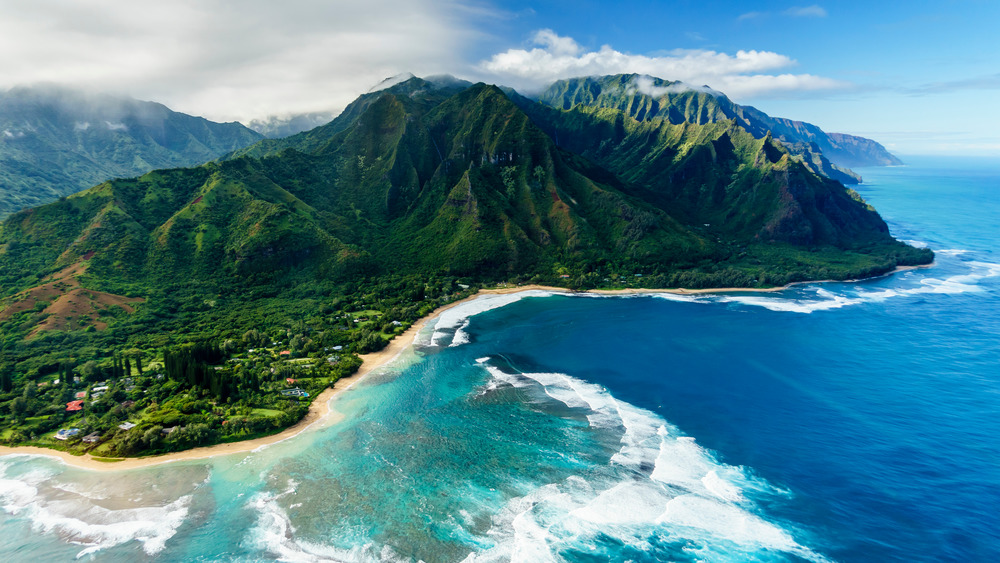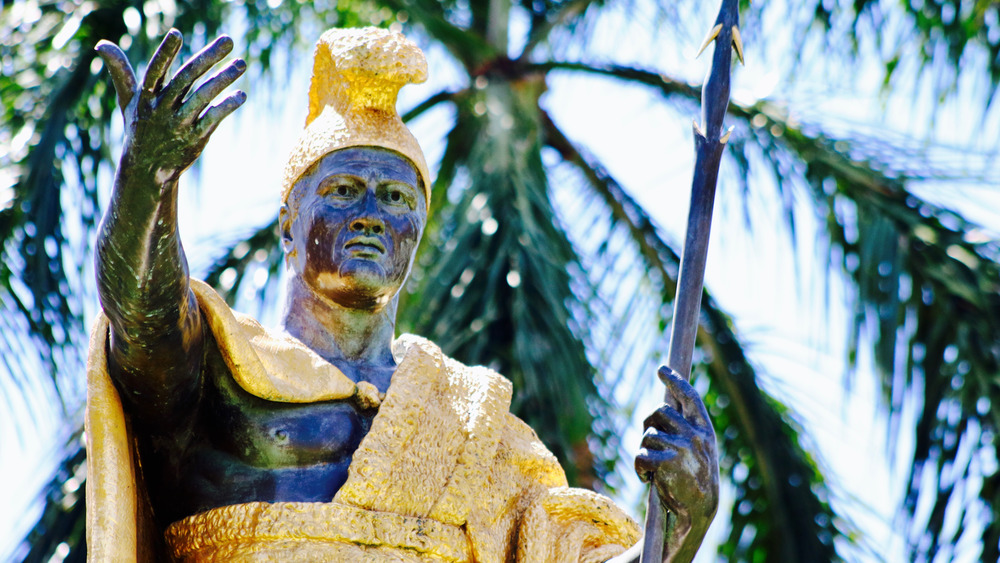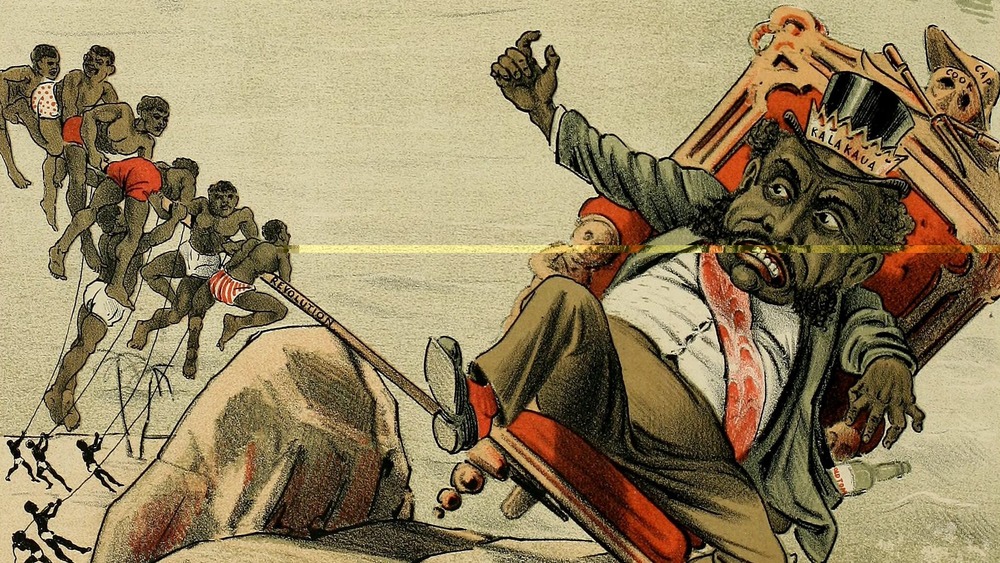How The United States Stole Hawaii
Even before it was an empire, the United States behaved like one. Decades before the Declaration of Independence in 1776, amid contests between the French, English, Spanish, Native Americans, the Plymouth Company, the London Company, and more, the very bedrock of the US became founded on contests over land. The original 13 colonies expanded and gobbled up earth, seizing tribal territories without remorse or compunction, as overviewed by Aeon. By the time the US engaged in the Mexican-American War (1846-48) over the US' annexation of Texas, as Britannica explains, the country was well on its way to fulfilling its original mandate of colonization.
Once the US abutted Canadian and Mexican borders, it simply turned its eyes overseas. Guam, The Marshall Islands, The Solomon Islands, Haiti, Puerto Rico, Cuba, The Northern Mariana Islands, American Samoa, The Virgin Islands, The Philippines: all of these islands have, at some point, been militarily occupied and/or annexed by the United States. Many of these were territorially relevant to the US, as they girded the country along its south side in the Caribbean, or expanded its influence into the Pacific Ocean (which eventually segued to the Korean War, Vietnam War, and other armed conflicts).
And then, of course, there's American's favorite tropical vacation site: Hawaii. Before Hawaii was annexed by the US, it was its own, sovereign kingdom.
A centuries old culture united for a short time
That is not to say that Hawaii was necessarily a peaceful, placid paradise before the US arrived. Since about 800 CE, Polynesian peoples had emigrated into what is referred to as the Polynesian triangle and developed unique cultures, with Hawaii at the northernmost tip, extending to Rapa Nui (Easter Island) in the southeast and Aotearoa (New Zealand) in the southwest. As the National Education Association describes, Hawaii underwent an extremely messy transition of power even before the US military invaded in 1893. Hawaii had been a singular, unified country only for about 80 years, since 1810. Kamehameha and his wife Queen Ka'ahumanu are, as Valley Isle Excursions relates, considered revered, benevolent figures in Hawaiian history. Go Hawaii explains how it took King Kamehameha the Great (later known as Kamehameha I) 40 years to expand from the island of Hawaii to Oahu, Maui, and the rest of the archipelago, and bring it under a single, dynastic rule.
In 1778, right in the middle of Kamehameha's campaign, Hawaii made its first contact with outsiders in about 600 years, when English explorer and navigator Captain James Cook landed at Waimea Bay on Kauai. The United States' interest in Hawaii grew immediately following Hawaii's unification. America sent traders and missionaries in the early 19th century, and Queen Ka'ahumanu abolished the ancient kapu system of social rules to institute a Judeo-Christian body of laws.
The ousting of a short-lived dynasty
Hawaiian monarchs continued to work with, and emulate, Western powers over the following decades, which was the avenue by which the US would eventually annex the nation. In 1848, as Hawaii History tells us, in an event called the Great Mahele, King Kamehameha III divided the land of Hawaii between the crown, lords, and commoners. This weakening of the Hawaiian monarchy led to the eventual drafting of an Hawaiian constitution dubbed the "Bayonet Constitution" in 1887, which King David Kalakua, as National Geographic explains, was forced to sign at gunpoint. The gunmen were composed of white settlers who were prominent sugar plantation owners or descendants of missionaries who had formed a group called the Hawaiian League. They insisted on suffrage for foreigners and wanted voting rights for landowners, which essentially transferred power from the monarchy to the more "settler-friendly" legislature.
When Queen Lili'uokolani attempted to amend the constitution in 1893 and return power to the monarchy and native Hawaiians, the plantation owners revolted. They called for US support, per US History, and marines stormed in. The queen, seeing that she'd essentially been ousted, drafted an unconditional surrender to the US on January 16. The president at the time, Grover Cleveland, was a relative anti-imperialist who didn't necessarily support the annexation of Hawaii, but his successor, William McKinley, thought differently. By the time the Spanish-American war broke out in 1898, and the US moved into the Philippines, Hawaii's fate as a strategic Pacific foothold was sealed, leading to its statehood in 1959.


